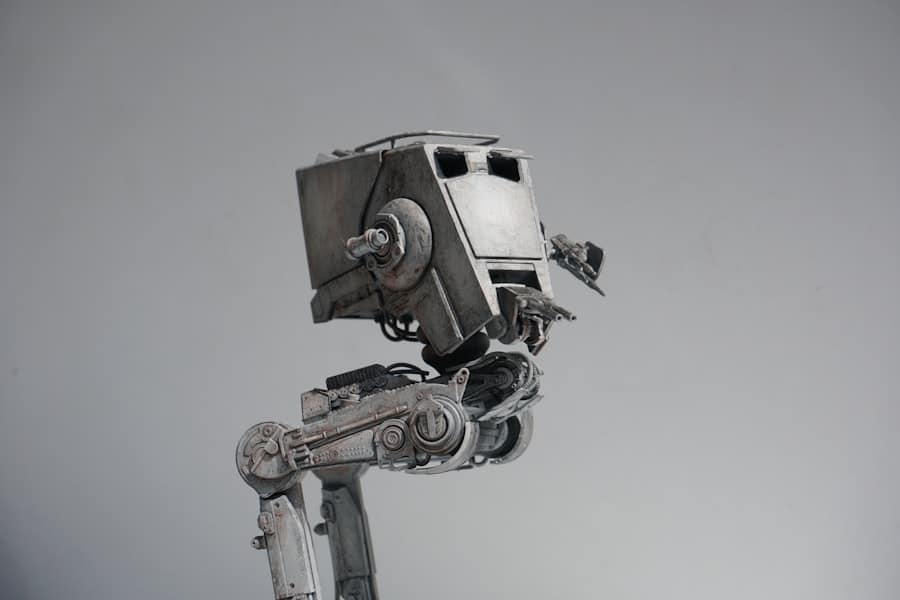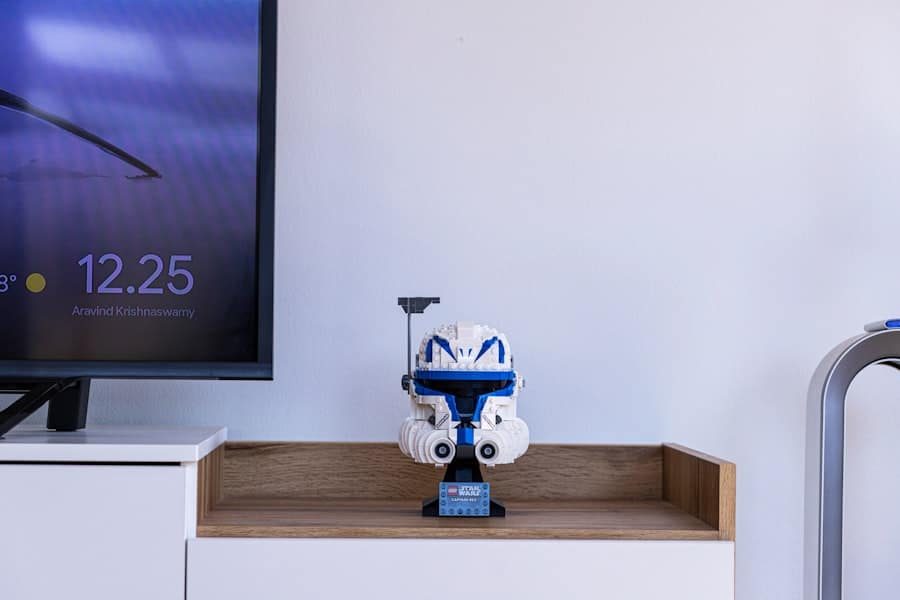Consumer robots have emerged as a transformative force in modern households, reshaping the way individuals interact with technology and manage daily tasks.
The evolution of consumer robots has been driven by advancements in technology, particularly in artificial intelligence, machine learning, and robotics engineering.
As these technologies continue to develop, consumer robots are becoming increasingly sophisticated, capable of learning from their environments and adapting to user preferences. The rise of consumer robots can be traced back to the early 2000s when the first robotic vacuum cleaners entered the market. Since then, the landscape has expanded dramatically, with innovations leading to a diverse array of products designed to enhance convenience and efficiency in everyday life.
The integration of smart home technology has further propelled the adoption of consumer robots, allowing them to communicate with other devices and systems within the home. This interconnectedness not only streamlines household management but also opens up new possibilities for automation and personalization in consumer robotics.
Key Takeaways
- Consumer robots are becoming increasingly popular and are designed to assist with various tasks in daily life.
- Current applications of consumer robots include cleaning, entertainment, companionship, and security.
- Consumer robots have the potential to improve efficiency, safety, and convenience in daily life.
- Advancements in consumer robot technology include improved sensors, AI capabilities, and more sophisticated designs.
- Ethical and social implications of consumer robots include privacy concerns, job displacement, and the potential for misuse.
Current Applications of Consumer Robots
Today, consumer robots serve a multitude of purposes across various domains, significantly enhancing the quality of life for many individuals. One of the most prevalent applications is in home cleaning, with robotic vacuum cleaners like the Roomba leading the charge. These devices utilize sensors and algorithms to navigate through living spaces, efficiently picking up dirt and debris while avoiding obstacles.
The convenience they offer has made them a staple in many households, allowing users to reclaim time that would otherwise be spent on mundane cleaning tasks. Beyond cleaning, consumer robots are increasingly being utilized for companionship and assistance. Social robots such as Jibo and ElliQ are designed to engage with users through conversation and interaction, providing emotional support and companionship, particularly for the elderly or those living alone.
These robots can remind users to take medications, schedule appointments, or even facilitate video calls with family members. The integration of voice recognition and natural language processing enables these robots to understand and respond to user queries, making them more relatable and effective in their roles.
The Impact of Consumer Robots on Daily Life

The introduction of consumer robots into daily life has had profound implications for how individuals manage their homes and interact with technology. One significant impact is the increased efficiency in household chores. With robotic vacuums and mops taking over cleaning duties, individuals can allocate their time to more meaningful activities, such as spending time with family or pursuing hobbies.
This shift not only enhances productivity but also contributes to improved mental well-being by reducing the burden of routine tasks. Moreover, consumer robots have the potential to foster greater independence among individuals with disabilities or mobility challenges. For instance, assistive robots can help users perform daily activities that may otherwise be difficult or impossible.
Devices like robotic arms or exoskeletons can aid in lifting objects or providing support while walking, thereby enhancing mobility and autonomy. This empowerment can lead to a more fulfilling life for those who might otherwise rely heavily on caregivers or family members for assistance.
Advancements in Consumer Robot Technology
The technological advancements driving the evolution of consumer robots are remarkable and multifaceted. One key area of development is in artificial intelligence, which enables robots to learn from their environments and improve their performance over time. Machine learning algorithms allow these devices to analyze data from their surroundings, adapt to user preferences, and optimize their functions accordingly.
For example, modern robotic vacuums can map out a home’s layout, learning the most efficient cleaning routes while avoiding obstacles based on previous experiences. Another significant advancement is in sensor technology. Consumer robots are now equipped with an array of sensors that enhance their ability to perceive and interact with their environment.
Lidar sensors, cameras, and ultrasonic sensors enable robots to navigate complex spaces with precision, detect changes in their surroundings, and even recognize faces or objects. This level of perception not only improves functionality but also enhances safety by allowing robots to avoid collisions or hazardous situations.
Ethical and Social Implications of Consumer Robots
As consumer robots become more integrated into daily life, ethical and social implications arise that warrant careful consideration. One major concern is privacy; many consumer robots are equipped with cameras and microphones that can collect data about users’ habits and preferences. This raises questions about data security and how this information is stored or shared by manufacturers.
Ensuring that user data is protected from unauthorized access is paramount in maintaining trust between consumers and technology providers. Additionally, the increasing reliance on consumer robots may lead to social isolation for some individuals. While these devices can provide companionship, they cannot fully replace human interaction.
There is a risk that people may become overly dependent on robotic companions at the expense of nurturing real-life relationships. Striking a balance between leveraging technology for convenience while fostering genuine human connections is essential for maintaining social well-being.
The Role of Artificial Intelligence in Consumer Robots

Artificial intelligence plays a pivotal role in enhancing the capabilities of consumer robots, enabling them to perform tasks that were once thought to be exclusive to humans. AI algorithms allow these robots to process vast amounts of data quickly, making real-time decisions based on their environment. For instance, a smart home assistant can learn a user’s schedule and preferences over time, adjusting its responses accordingly to provide personalized assistance.
Moreover, AI facilitates natural language processing (NLP), which enables robots to understand and respond to human speech more effectively. This capability is crucial for social robots designed for companionship or assistance; they must be able to engage users in meaningful conversations while understanding context and nuance. As NLP technology continues to advance, we can expect consumer robots to become even more adept at interacting with users in a way that feels natural and intuitive.
Future Trends in Consumer Robotics
Looking ahead, several trends are poised to shape the future of consumer robotics significantly. One notable trend is the increasing integration of robotics with smart home ecosystems. As homes become smarter through interconnected devices, consumer robots will likely evolve into integral components of these systems.
For example, a robotic assistant could coordinate with smart appliances to optimize energy usage or manage household tasks more efficiently. Another trend is the rise of modular robotics, where consumers can customize their robots based on specific needs or preferences. This could involve adding new functionalities or upgrading existing features as technology advances.
Such flexibility would empower users to tailor their robotic companions to suit their lifestyles better, enhancing user satisfaction and engagement.
The Potential of Consumer Robots in Daily Life
The potential of consumer robots in daily life is vast and continues to expand as technology evolves. From enhancing household efficiency to providing companionship and support for those in need, these devices are reshaping our interactions with technology and each other. As advancements in artificial intelligence and robotics continue to progress, we can anticipate even more innovative applications that will further integrate consumer robots into our daily routines.
However, as we embrace this technological revolution, it is crucial to remain mindful of the ethical considerations surrounding privacy, social interaction, and dependency on technology. By addressing these challenges proactively, we can harness the full potential of consumer robots while ensuring they enhance rather than detract from our quality of life. The future holds exciting possibilities for consumer robotics, promising a world where technology seamlessly integrates into our lives, enriching our experiences and empowering us in ways we have yet to fully imagine.
As we explore the future of consumer robots in daily life, it’s interesting to consider how advancements in technology are shaping our everyday experiences. For instance, the article on the Samsung Galaxy Tab S8 highlights the integration of powerful devices that can complement robotic technologies, enhancing our interaction with smart home systems and personal assistants. This synergy between tablets and consumer robots could redefine convenience and efficiency in our daily routines.
FAQs
What are consumer robots?
Consumer robots are robots designed for personal or household use, intended to assist with tasks and provide entertainment or companionship to consumers.
What are some examples of consumer robots?
Examples of consumer robots include robotic vacuum cleaners, robotic lawn mowers, personal assistant robots, educational robots for children, and entertainment robots such as robotic pets.
How are consumer robots expected to impact daily life in the future?
Consumer robots are expected to have a significant impact on daily life in the future by automating household tasks, providing companionship and assistance to individuals, and enhancing overall convenience and efficiency in various aspects of daily life.
What are some potential benefits of consumer robots in daily life?
Some potential benefits of consumer robots in daily life include saving time and effort on household chores, providing assistance to individuals with limited mobility or disabilities, and offering educational and entertainment opportunities for users.
What are some potential challenges or concerns related to the future of consumer robots in daily life?
Some potential challenges or concerns related to the future of consumer robots in daily life include privacy and security issues, potential job displacement due to automation, and ethical considerations regarding the use of robots in caregiving and other personal roles.

